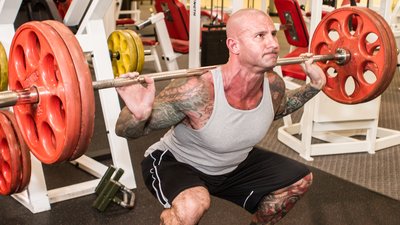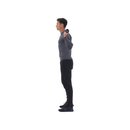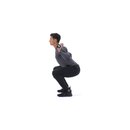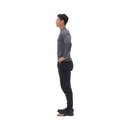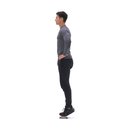We tend to focus on the big picture when it comes to training legs: big lifts with big weights that hit the biggest amount of muscle mass. There's certainly nothing wrong with that, so keep doing your big lifts to stimulate growth in the largest muscles of the lower body—the quads, glutes, and hams.
But every now and then, it's a good idea to focus on the finer points of these muscle groups, especially if your muscular development is lagging in some key areas.
I've identified three such areas in the lower body that seem to be problematic for many trainees: the quadriceps "teardrop," the inner hamstrings, and the outer calves. If any one of these areas is troubling you, here's your chance to troubleshoot and grow!
Trouble Spot 1: Quadriceps Teardrop (Inner Quad)
Fashion trends seem to say that board shorts are here to stay, but that doesn't mean the lower quads aren't visible when wearing a pair. One area that often remains visible is the vastus medialis (teardrop) muscle that sits just above the knee on the inner side of the leg. There are a number of exercises and techniques you can do to place more focus on this area.
First, don't go as deep on barbell squats when you're looking to bring up the teardrop. Several studies have found that when the range of motion is shortened (stopping just short of parallel), the focus of the lift shifts more to the quads and less to the hamstrings and glutes.[1]
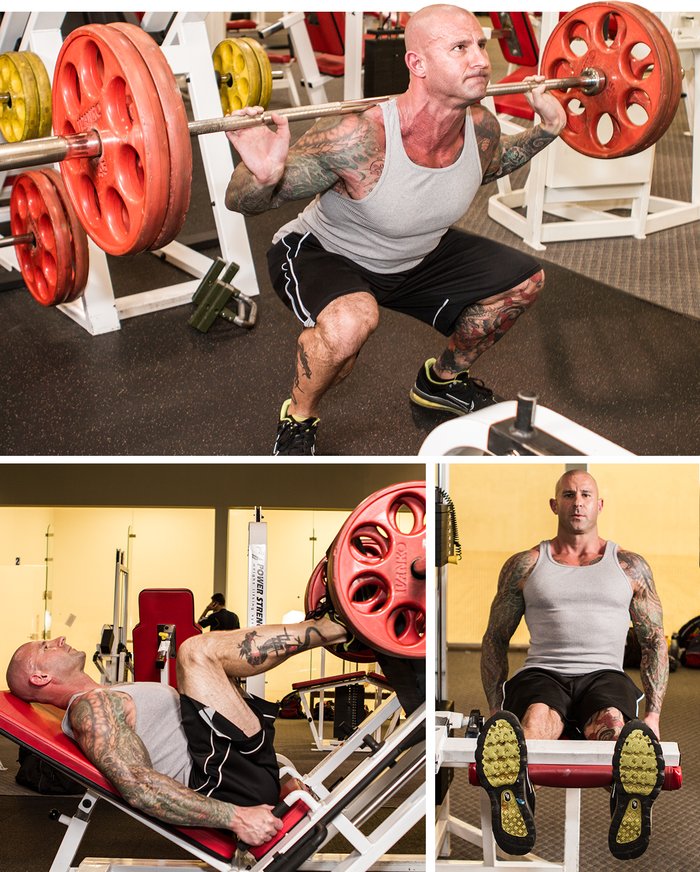
Fashion trends seem to say that board shorts are here to stay, but that doesn't mean the lower quads aren't visible when wearing a pair.
Of course, this presents a dilemma: Keep going low on your squats and sacrifice teardrop development, or shorten the range of motion and lose glute and hamstring strength? I say don't sacrifice anything—have the best of the both worlds! Alternate every other squat workout between using heavy weight with a shortened range of motion and moderate weight going full depth.
Exercises that specifically target the teardrop are leg presses and leg extensions, where your feet are turned outward during execution.[2] Make sure you include both of these exercises in your routine on a regular basis if lower-body aesthetics are important to you.

BodyFit
$6.99/month- 2,500+ expert-created single workouts
- 3,500+ how-to exercise videos
- Detailed workout instruction
- Step-by-step workout tips
- Training at gym or at home
- Access to Workout Plans
- Access to Bodyfit App
- Store Discounts
Already have a Bodybuilding.com account with BodyFit? Sign In

What comes with BodyFit?

- Instructional Videos
Don't risk doing a workout improperly! Avoid injury and keep your form in check with in-depth instructional videos.

- How-to Images
View our enormous library of workout photos and see exactly how each exercise should be done before you give it a shot.

- Step-by-Step Instructions
Quickly read through our step-by-step directions to ensure you're doing each workout correctly the first time, every time.
Trouble Spot 2: Inner Hamstrings
When most guys think of hamstrings, they think there's only one muscle back there. But while the biceps femoris makes up the majority of your hamstring mass, especially the outer area, there are actually three different muscles that comprise the hammies.
The other two are the semitendinosus and semimembranosus, which make up the inner hamstrings. If you spend most of your workouts doing lying leg curls, as many people do, your outer hamstrings likely overshadow your inners.
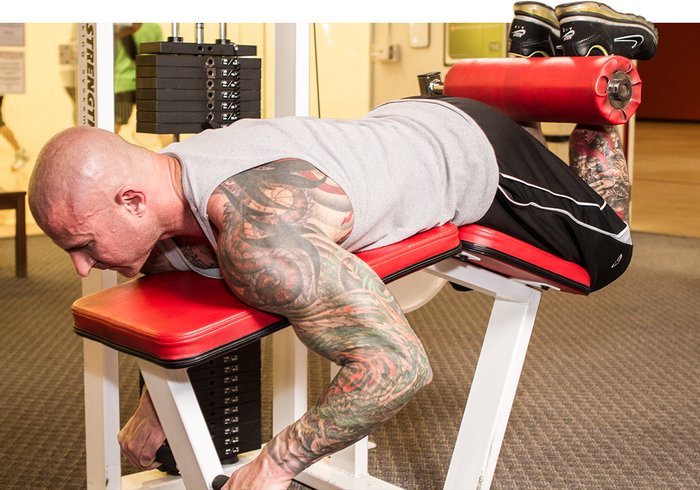
When doing lying leg curls, turning your feet in further shifts the focus toward the inner hams.
To fix this imbalance, start including Romanian deadlifts in your ham workouts, which help build overall mass—especially toward the hip joint—as well as seated leg curls, which research suggests place more emphasis on the semitendinosus and semimembranosus than the biceps femoris.[3] Also, when doing lying leg curls, turning your feet in further shifts the focus toward the inner hams.
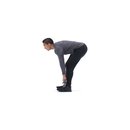
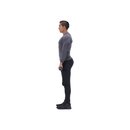

BodyFit
$6.99/month- 2,500+ expert-created single workouts
- 3,500+ how-to exercise videos
- Detailed workout instruction
- Step-by-step workout tips
- Training at gym or at home
- Access to Workout Plans
- Access to Bodyfit App
- Store Discounts
Already have a Bodybuilding.com account with BodyFit? Sign In

What comes with BodyFit?

- Instructional Videos
Don't risk doing a workout improperly! Avoid injury and keep your form in check with in-depth instructional videos.

- How-to Images
View our enormous library of workout photos and see exactly how each exercise should be done before you give it a shot.

- Step-by-Step Instructions
Quickly read through our step-by-step directions to ensure you're doing each workout correctly the first time, every time.
Trouble Spot 3: Outer Calves
There's no secret that calves are a tough muscle group to bring up. While many blame their genetics for poor calf development, it's often truly a case of poor work ethic when it comes to puny lower legs. If you consistently put in the work, your calves will respond!
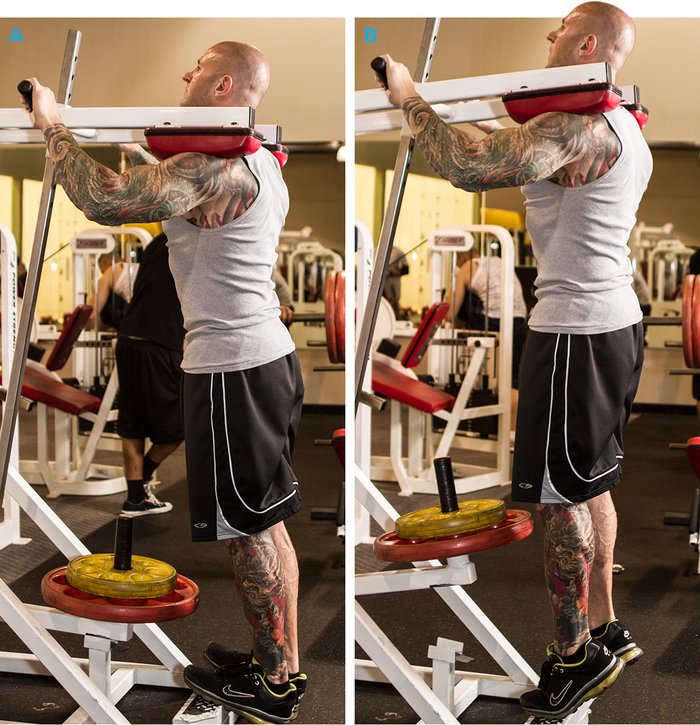
Standing Calf Raise
That said, even guys who have decent calf size find that the medial gastrocnemius (inner calf head) is more developed than the outer head (lateral gastrocnemius). This makes sense, as one study from Armstrong Atlantic State University found that the inner calf head is stimulated more than the outer head during a standard calf raise, where the toes are pointed straight ahead.[4]
Fortunately, the same study that turning the toes in while doing calf raises placed more focus on the outer head. So, place your feet about hip-width apart with your toes turned in toward each other as much as possible, and then have a cow with your calf raises!

BodyFit
$6.99/month- 2,500+ expert-created single workouts
- 3,500+ how-to exercise videos
- Detailed workout instruction
- Step-by-step workout tips
- Training at gym or at home
- Access to Workout Plans
- Access to Bodyfit App
- Store Discounts
Already have a Bodybuilding.com account with BodyFit? Sign In

What comes with BodyFit?

- Instructional Videos
Don't risk doing a workout improperly! Avoid injury and keep your form in check with in-depth instructional videos.

- How-to Images
View our enormous library of workout photos and see exactly how each exercise should be done before you give it a shot.

- Step-by-Step Instructions
Quickly read through our step-by-step directions to ensure you're doing each workout correctly the first time, every time.
References
- Caterisano, A., Moss, R. E., Pellinger, T. K., Woodruff, K., Lewis, V. C., Booth, W., & Khadra, T. (2002). The effect of back squat depth on the EMG activity of 4 superficial hip and thigh muscles. The Journal of Strength & Conditioning Research, 16(3), 428-432.
- Hung, Y. J., & Gross, M. T. (1999). Effect of foot position on electromyographic activity of the vastus medialis oblique and vastus lateralis during lower-extremity weight-bearing activities. Journal of Orthopaedic & Sports Physical Therapy, 29(2), 93-105.
- McAllister, M. J., Hammond, K. G., Schilling, B. K., Ferreria, L. C., Reed, J. P., & Weiss, L. W. (2014). Muscle activation during various hamstring exercises. The Journal of Strength & Conditioning Research, 28(6), 1573-1580.
- Riemann, B. L., Limbaugh, G. K., Eitner, J. D., & LeFavi, R. G. (2011). Medial and lateral gastrocnemius activation differences during heel-raise exercise with three different foot positions. The Journal of Strength & Conditioning Research, 25(3), 634-639.


